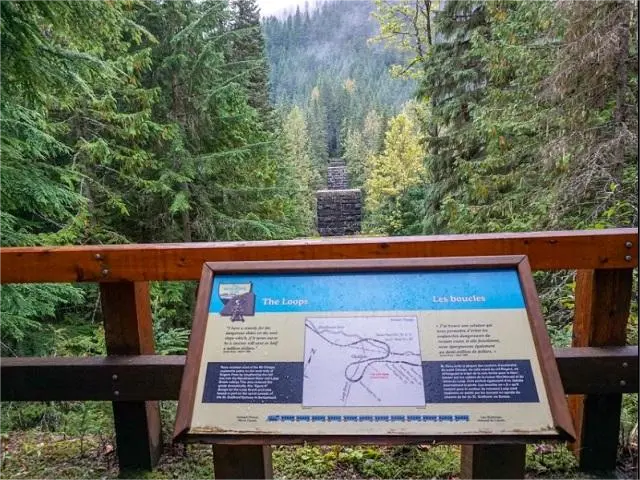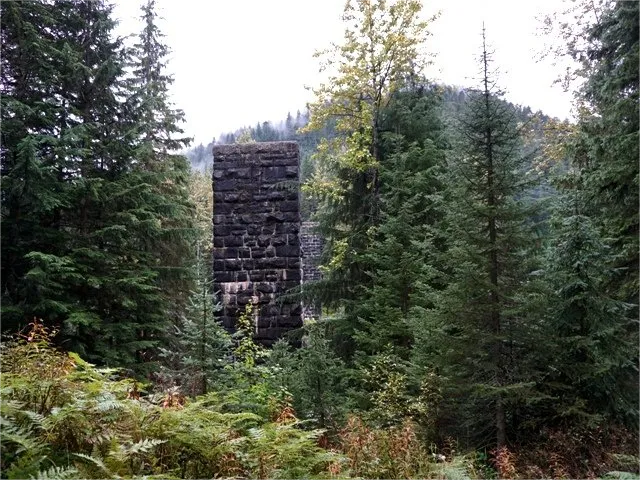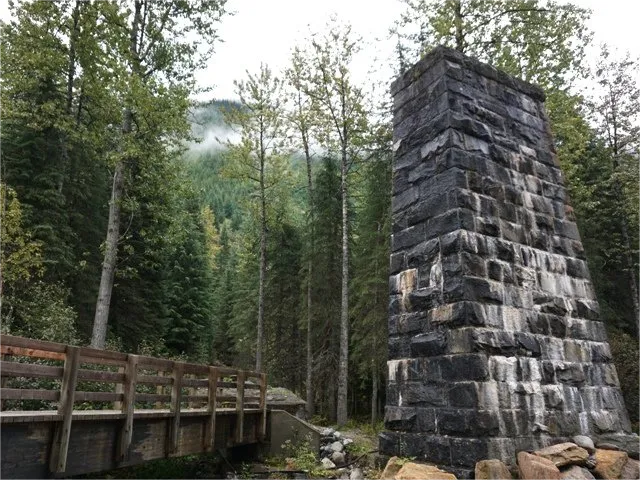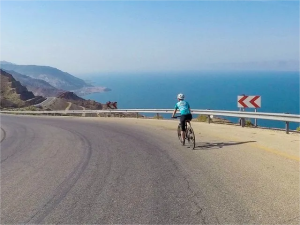The Rise and Fall of Glacier House at Rogers Pass
- by Mohamed Adam

Discovering ‘Glacier House’ and ‘The Loops’
Along the hiking trail, we visually scan the clearing in the lush forest just below Rogers Pass in the heart of Glacier National Park in British Columbia Canada. We marvel at the neatly lined stone foundation remnants of what once was an iconic luxury railway hotel known as Glacier House. Why was Glacier House at Rogers Pass built in such an isolated location?
Why are the sister hotels Banff Springs Hotel and Chateau Lake Louise two of the most popular hotels in the world when all that remains of Glacier House is rubble?
Venturing about three kilometres to the west, a puzzling discovery is found along well kept interpretive trails which partially follow an abandoned railway line.

“What the heck are these towers doing here?” Rising out of the mountain forest floor stand a series of stone towers, forming both straight and curved lines through the trees. “The Loops, it says on this sign”. With curiosity at a peak, we read the smaller print and determine what “The Loops” are and what these towers have to do with them.


The stone towers once supported a rail line that made a series of drastic curves (The Loops) in order to achieve elevation over Rogers Pass at a reasonable grade for trains to successfully climb.
So the Glacier House at Rogers Pass and The Loops remnants are the western Canadian version of historic ruins. Quite curious in such a young part of the country. What the heck happened to them?
Rogers Pass – A Unique Challenge
Come with me back over 130 years to understand the rise and fall of the remarkable sites of Glacier House and The Loops.
“How are we possibly going to get the trains over this mountain pass!” One of the last hurdles to connect the Canadian Pacific Railway’s Trans Canada line is definitely one of the toughest. With a steep grade up the west side of Rogers Pass, some out of the box thinking will be required to find a way to get a loaded train to the top of the pass.
Precipitous mountain slopes on both sides and extremely high annual snowfall (averaging 9.3 metres or 31 feet annually) add to the already ominous challenges that define Rogers Pass.
The railway path integrates a series of tight loops (‘The Loops) to reach the top of Rogers Pass, adding five kilometres (three miles) of track. This unique railway line reduces the overall grade of the climb and avoids some of the avalanche prone areas. Adding a total 6.5 kilometres (4 miles) of snow sheds (31 in all) to both sides of Rogers Pass further reduces the risk of avalanche delay, damage or injury.
Glacier House at Rogers Pass – The Rise
It’s 1886, and the railway is open for business! The removal of dining cars reduces the train weight. Instead, three dining halls are constructed between Vancouver and Calgary. The middle one is named Glacier House, located just below the “Great Glacier” (now named the Illecillewaet Glacier) on the west side of Rogers Pass. Train schedules allow for stops at each of these dining halls.
In this same year of 1886, Canada’s second (Yoho) and third (Glacier) National Parks are created, only one year after Banff National Park was created (1885). The new National Parks attract more and more people each season. While Banff National Park is known best for its beautiful scenery, alpine adventures define Glacier National Park.
The location of Glacier House at Rogers Pass, in the midst of Glacier National Park, puts adventurous visitors within easy access of the high alpine. Initially a few chalets are constructed to accommodate overnight guests. Over time the demand grows and Glacier House becomes the first of Canadian Pacific Railway’s luxury mountain hotels including the Banff Springs Hotel, Chateau Lake Louise and Hotel Vancouver (We are personally astounded that another sister hotel once existed).
Glacier House at Rogers Pass – The Fall
But there is an Achilles’ heel. On March 4, 1910 a massive avalanche roars down near the top of Rogers Pass killing 58 workers. Ironically they are there to clear another avalanche that crashed down earlier from the opposite side of the valley. Multiple avalanches over a 30 year period take the lives of over 200 souls during the construction and maintenance of the railway over Rogers Pass.
This last disaster convinces Canadian Pacific Railway to construct an eight kilometre (five mile) tunnel under Mount MacDonald in order to bypass Rogers Pass. The Connaught Tunnel opens in 1916, and the original railway line over Rogers Pass is abandoned the following year. This separates Glacier House from the new railway line.
Horse drawn carriages are put into use to ferry guests up from the mouth of the new tunnel to Glacier House along the abandoned railway line. This inconvenience results in fewer and fewer guest visits over time.
Glacier House closes its door for good at the end of the 1925 season. Finer furnishings are taken to the younger and more popular Chateau Lake Louise. Glacier House at Rogers Pass is then purposely destroyed in 1929 (to eliminate future hazards of decaying structures).
The Rogers Pass lays quiet for decades until the new Trans Canada Highway opens in 1963. In place of the Glacier House and The Loops, campgrounds and interpretive hiking trails are created.
How to get to Rogers Pass, Glacier House and The Loops
We have to admit that in the dozens of car trips we’ve taken past this historic spot, we were unaware of its existence until being introduced to these hiking areas during a visit to the town of Golden.
From Calgary, follow the TransCanada highway 80 kilometers (50 miles) past Golden to Rogers Pass. It’s worth stopping at Rogers Pass Discovery Centre to get an excellent understanding of the history of this region.
Just 3.7 kilometres farther west, follow the Illecillewaet (repeat 10 times fast) Campground turnoff to see the remnants of Glacier House.
Another three kilometers west gets you to the Loop Brook Campground turnoff to see the ruins of The Loops trestle towers and railway line. Both spots have excellent interpretive hiking trails to explore and enjoy the amazing mountain and forest scenery.


Although the rise and fall of Glacier House and The Loops occurred in a rather short time frame of only 40 years (1885 – 1925), their stories and memories are kept alive at their original sites, and at the Rogers Pass Discovery Centre.
Discovering ‘Glacier House’ and ‘The Loops’ Along the hiking trail, we visually scan the clearing in the lush forest just below Rogers Pass in the heart of Glacier National Park in British Columbia Canada. We marvel at the neatly lined stone foundation remnants of what once was an iconic luxury railway hotel known as Glacier House. Why…




